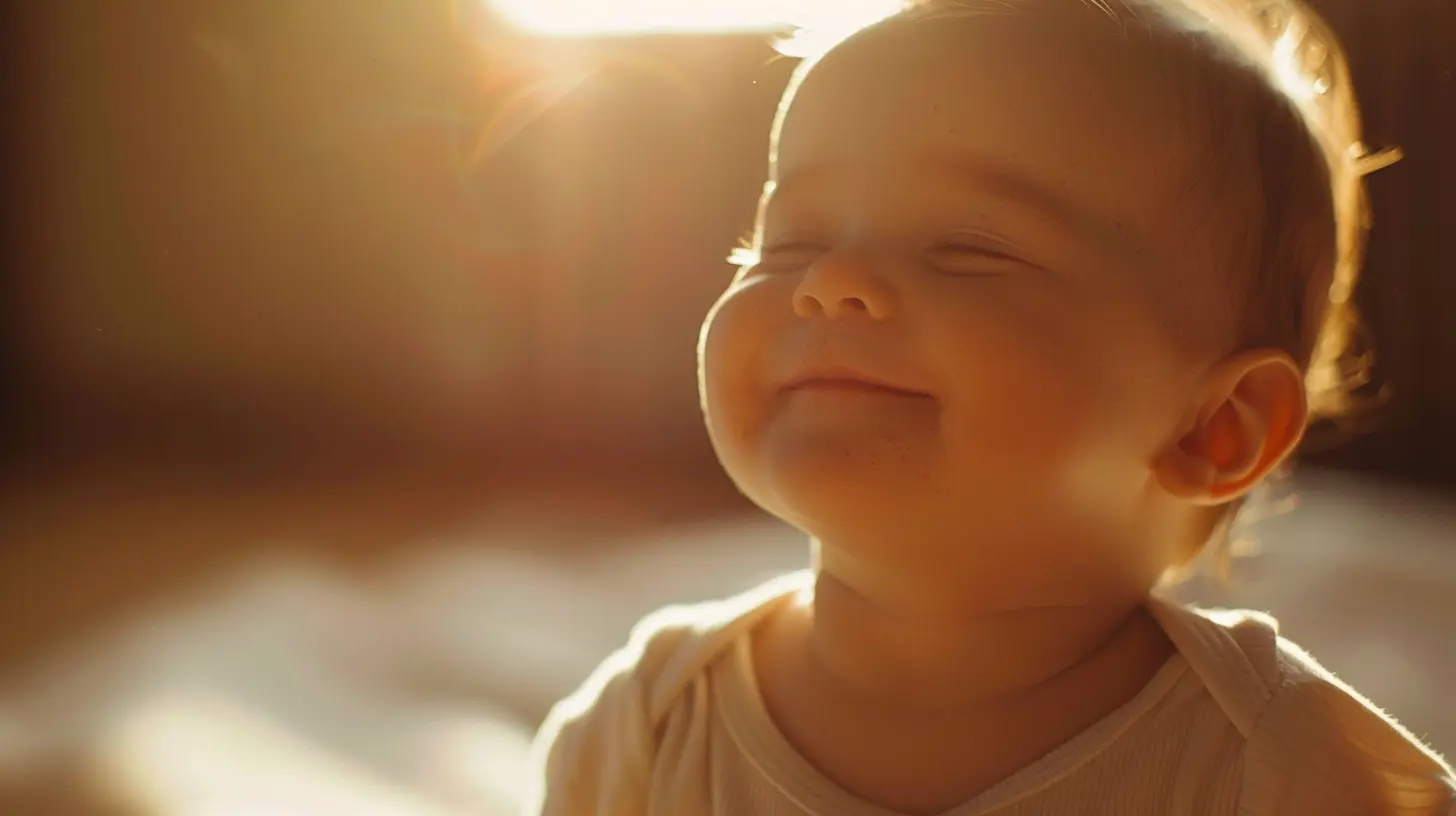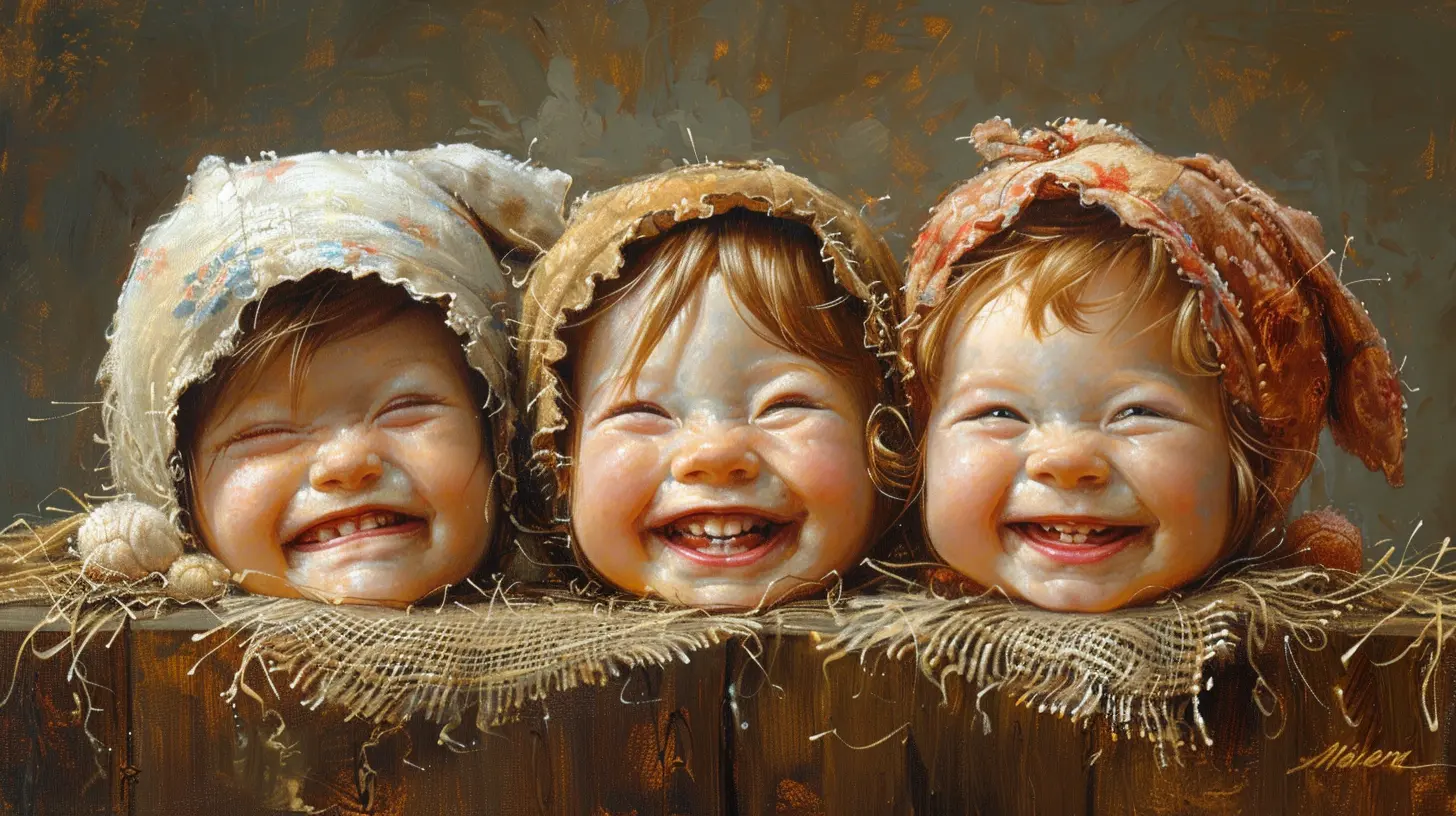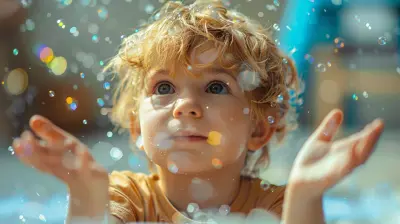Understanding Your Baby’s Social Smiles and Emotional Cues
17 November 2025
Ever caught your baby smiling at you and wondered, "Is that a real smile or just gas?" If you're a new parent, you're not alone. That little curve of the lips can spark a thousand questions. But here's the good news: babies are way more expressive than we give them credit for.
Your baby’s social smile is one of the first signs that they’re connecting with the world around them — and especially with you. It’s not just adorable; it’s meaningful. From the earliest grins to subtle facial expressions and body movements, babies are constantly trying to communicate. The secret is learning how to decode their cues.
In this guide, we’ll walk through what social smiles are, how to spot emotional signals from your baby, and what these cues tell you about their development. So grab a coffee (or reheat the one you were drinking an hour ago), and let's dive in!
What Is a Social Smile?
Let’s start with the basics: a social smile is a smile that your baby flashes in response to seeing a familiar face — usually yours. It typically appears around 6 to 8 weeks of age and is one of the most heart-melting milestones you’ll witness early on.Not Just Reflexes Anymore
Before this stage, your baby might give you random half-smiles or grin in their sleep. Those are reflexive smiles — more like muscle twitches than emotional responses. When the social smile kicks in, though, it’s a game changer. Now, your baby is smiling because something (or someone) is making them happy.Okay, But Why Is It Called “Social”?
Great question. It’s called a social smile because it’s your baby’s first real social interaction — a non-verbal way to say, “Hey, I see you, and I’m diggin’ your face.” It means your baby’s brain and vision are developing enough to recognize people and respond emotionally.
When Do Babies Start Smiling Socially?
The magic typically starts between 6 and 10 weeks. Some babies show it a little earlier, some a bit later. Don’t sweat it if your little one takes their sweet time — every baby has their own pace.Signs Your Baby Is Getting There
- More alertness: They’ll start spending more time awake and paying attention to faces.- Tracking motion: You’ll notice them following your movements with their eyes.
- Increased cooing: They're slowly figuring out how to make sounds and get your attention.
If by 3 months you’re not seeing any reactive smiles, it might be worth a gentle chat with your pediatrician — not to panic, just to check in.
Why Social Smiles Matter
Think of social smiles as your baby’s way of saying, "I’m connecting with you." And honestly? That’s huge.A Sign of Developmental Progress
That little smile tells you they're hitting early emotional and cognitive milestones. They’re starting to:- Recognize familiar faces
- Feel joy and contentment
- Understand cause and effect (you make silly faces = they smile)
Building Bonds
Every time your baby smiles in response to you, you’re reinforcing your emotional bond. This back-and-forth — you smile, they smile back — lays the groundwork for social communication later in life.
Emotional Cues: What Your Baby’s Trying to Tell You (Without Words)
Smiles are just one piece of the puzzle. Babies are packed full of signals — facial expressions, body language, sounds — and all of it means something.Let’s break down some of the emotional cues you’ll see and what they usually indicate.
1. Happiness
Clues:- Big, open-mouthed grins
- Gurgling or cooing
- Relaxed limbs
- Bright eyes
When your baby is happy, they’re going to show it — and you’ll feel it. They might even kick their legs like they’re doing a happy dance.
2. Overstimulation
Clues:- Turning head away from you
- Fussiness or crying
- Squirming arms and legs
- Yawning or hiccuping
Weird, right? Yawning doesn't always mean sleepiness in infants — sometimes it’s a subtle "I’ve had enough of this circus."
If you spot these signs, give them a little break. Dim the lights, turn off the noise, and let them reset.
3. Fear or Discomfort
Clues:- Wide eyes
- Quivering lip
- Arched back
- Sudden crying
This can happen when they're introduced to new people, loud sounds, or even unexpected touch. It’s their way of saying, “I don't feel safe right now.”
4. Interest
Clues:- Quiet alert state
- Staring intently
- Reaching toward objects or people
- Still body, focused gaze
This is your baby’s “I’m learning something” mode. It’s a goldmine for interaction — sing, talk, or bring out those black-and-white flashcards.
How to Encourage Social Smiles and Emotional Development
You can actually help your baby get better at smiling and expressing emotions, just by engaging with them. No flashcards required (unless you’re into that).Smile (A Lot!)
Babies are like emotional mirrors. The more you smile, the more likely they’ll learn to smile back. Your face is their favorite show — so keep it expressive.Eye Contact Is Magic
When you lock eyes with your baby, you’re doing more than just being cute. You’re helping them learn focus, trust, and emotional connection.Talk and Coo
Even if you feel silly narrating your diaper changes, your voice is teaching them tone, rhythm, and social patterns. Use a sing-song voice and get animated.Play Simple Games
Peek-a-boo, anyone? Repeating games like this helps babies anticipate outcomes, which boosts both memory and social development.Watch, Wait, Respond
This one’s key. Take a moment to really observe your baby. Give them time to process, and then respond to whatever they’re showing you. That two-way exchange — even if it feels one-sided — is where the magic happens.What If Your Baby Doesn't Smile?
Take a deep breath. Some babies are a bit more reserved — just like adults. But if your baby isn’t smiling socially by 3 months, along with a lack of eye contact or responsiveness, bring it up with your pediatrician.Possible reasons might include:
- Vision issues
- Hearing challenges
- Delays in social or emotional development
Early support makes a big difference, so there’s no harm in checking in.
Your Role as an Emotional Translator
You might not be fluent in baby babble (yet), but you’re already your child’s first emotional translator.Being present, observing, and tuning in to their cues builds trust. And trust sets the stage for everything else — learning, loving, and growing into secure, emotionally intelligent humans.
Yes, it's overwhelming (and yes, you'll second-guess yourself a lot). But don’t worry — babies don’t need perfection, just connection.
Frequently Asked Questions
Can newborns actually recognize faces?
Yep, especially yours! Newborns can recognize faces within a few days of birth, particularly the one they see the most — typically mom or dad.Are social smiles different from gas smiles?
Totally. Gas smiles are random and typically happen during sleep. Social smiles happen when your baby sees something or someone they really like — usually with eye contact and a burst of joy.Do premature babies smile later?
They often do. Premature babies might hit milestones a bit later than full-term babies. Use their adjusted age (accounting for how premature they were) when looking at development like social smiling.How can I tell if my baby is bonding with me?
Eye contact, calmness when you’re near, cooing, smiling, and reaching for you are all signs your baby feels bonded. It’s less about perfect moments and more about consistent presence and love.Final Thoughts
Understanding your baby’s social smiles and emotional cues isn’t just about catching cute moments (though, yes, they’re ridiculously cute). It’s about tuning into your baby’s unique way of connecting and communicating with the world — especially with you.Sure, you might feel like a clueless tourist in a foreign country at first. But the more time you spend watching, responding, and engaging, the more fluent you'll become in "baby talk."
So lean in, smile back, and trust that every coo and grin is your baby’s way of saying, “I’m here, I see you — and I love you.”
You’ve got this, parent.
all images in this post were generated using AI tools
Category:
Infant DevelopmentAuthor:

Maya Underwood
Discussion
rate this article
1 comments
Dorothy McKibben
Exploring your baby’s social smiles and emotional cues is a beautiful journey. Every little expression reveals their feelings and connection to you—embrace these precious moments of bonding!
November 17, 2025 at 4:05 AM


